Today Current Affairs: 11th May 2021 for UPSC IAS exams, State PSC exams, SSC CGL, State SSC, RRB, Railways, Banking Exam & IBPS, etc
Table of Contents
NITI Aayog Report:
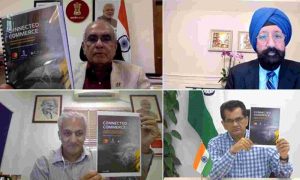
NITI Aayog and Mastercard released a report titled ‘Connected Commerce: Creating a Roadmap for a Digitally Inclusive Bharat’.
- The report identifies challenges in accelerating digital financial inclusion in India and provides recommendations for making digital services accessible to its 1.3 billion citizens.
Key recommendations in the report include:
- Strengthening the payment infrastructure to promote a level playing field for NBFCs and banks.
- Digitizing registration and compliance processes and diversifying credit sources to enable growth opportunities for MSMEs.
- Building information sharing systems, including a ‘fraud repository’, and ensuring that online digital commerce platforms carry warnings to alert consumers to the risk of frauds.
- Enabling agricultural NBFCs to access low-cost capital and deploy a ‘phygital’ (physical + digital) model for achieving better long-term digital outcomes. Digitizing land records will also provide a major boost to the sector.
- To make city transit seamlessly accessible to all with minimal crowding and queues, leveraging existing smartphones and contactless cards, and aim for an inclusive, interoperable, and fully open system such as that of the London ‘Tube’.
Rise In Global Commodity Prices:

Recently, there has been an across-the-board rise in global commodity prices that is being billed as a new commodity supercycle.
- A commodity is a basic good used in commerce that is interchangeable with other goods of the same type. Commodities are most often used as inputs in the production of other goods or services.
- A commodity supercycle is a sustained period of abnormally strong demand growth that producers struggle to match, sparking an increase in prices that can last years or in some cases a decade or more.
Current Situation:
Metals:
- Steel, the most commonly used input in the construction sector and industries, is at all-time highs, as most metals including base and precious metals prices have increased a lot in the last one year.
Agricultural Products:
- Sugar, corn, coffee, soybean oil, palm oil — have risen sharply in the US commodities market, the effect of which is being seen in the domestic market, too.
Reason: The new commodity supercycle is resulting from:
- Recovery in global demand (led by a recovery in China and the US).
- Supply-side constraints.
- Loose monetary policy of global central banks.
- Investment in Asset Creation: It is also a result of money starting to hide in assets that are stores of value as there is an expectation that inflation may rise.
- Therefore it is fear of inflation that is leading to jump in prices and it is not demand driven.
About Loose and Tight Monetary Policies:
- A monetary policy that lowers interest rates and stimulates borrowing is an expansionary monetary policy or loose monetary policy.
- Conversely, a monetary policy that raises interest rates and reduces borrowing in the economy is a contractionary monetary policy or tight monetary policy.
- Inflation: Inflation refers to the rise in the prices of most goods and services of daily or common use, such as food, clothing, housing, recreation, transport, consumer staples, etc.
- Inflation measures the average price change in a basket of commodities and services over time.
- Inflation is indicative of the decrease in the purchasing power of a unit of a country’s currency. This could ultimately lead to a deceleration in economic growth.
- However, a moderate level of inflation is required in the economy to ensure that production is promoted.
- In India, inflation is primarily measured by two main indices — WPI (Wholesale Price Index) and CPI (Consumer Price Index) which measure wholesale and retail-level price changes, respectively.
- Core Inflation: It is the change in the costs of goods and services but does not include those from the food and energy sectors. This measure of inflation excludes these items because their prices are much more volatile.
- It is important because it’s used to determine the impact of rising prices on consumer income.
Pradhan Mantri Garib Kalyan Ann Yojana:
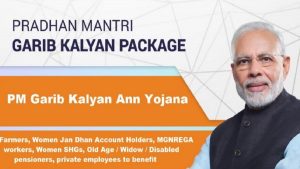
Thirteen states have started distributing foodgrains under the Pradhan Mantri Garib Kalyan Ann Yojana (PMGKAY).
- The scheme has been rolled out again for two months (May and June 2021) as the country’s healthcare infrastructure has reached its capacity and several states have taken steps like complete lockdown, night curfew to contain the spread of the disease.
- PMGKAY is a part of Pradhan Mantri Garib Kalyan Package (PMGKP) to help the poor fight the battle against Covid-19.
- Its nodal Ministry is the Ministry of Finance.
- It was initially announced for a three-month period (April, May and June 2020), covering 80 crore ration cardholders. Later it was extended till November 2020.
- However, in April 2021, the government had announced its decision to restart the PMGKAY.
- The scheme aimed at providing each person who is covered under the National Food Security Act 2013 with an additional 5 kg grains (wheat or rice) for free, in addition to the 5 kg of subsidized food grain already provided through the Public Distribution System (PDS).
- The new version of the PMGKAY lacks one of its important components which was there in 2020 PMGKAY i:e free-of-cost 1 kg pulses per month to each household covered under the NFSA.
- The government of India will bear all expenditures of over Rs. 26,000 crore on account of food subsidy and Central assistance to states/UTs on account of intra-state transportation etc.
- Out of a total monthly allocation of 39.69 lakh Metric Tonnes (MT) under the PMGKAY, 15.55 lakh MT have been lifted by states.
- 1.01 lakh MT have been distributed to 2.03 crore beneficiaries till May 2021.
- A key issue is that the beneficiaries of the National Food Security Act are based on the last census (2011).
- The number of food-insecure people has increased since then and they remain uncovered.
100% Tap Water Connection In Rural Areas In Puducherry: JJM:
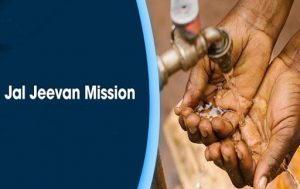
The Union Territory of Puducherry has become the fourth State/UT after Goa, Telangana, and Andaman & Nicobar Islands to provide assured tap water supply to every rural home under Jal Jeevan Mission (JJM).
- Further, the State of Punjab and the UTs of Dadra & Nagar Haveli and Daman & Diu have also crossed the milestone of covering 75% of rural homes with assured tap water supply.
Jal Jeevan Mission:
- JJM envisages a supply of 55 liters of water per person per day to every rural household through Functional Household Tap Connections (FHTC) by 2024.
- It is under the Ministry of Jal Shakti.
- JJM focuses on integrated demand and supply-side management of water at the local level.
- Creation of local infrastructure for source sustainability measures as mandatory elements, like rainwater harvesting, groundwater recharge and management of household wastewater for reuse, is undertaken in convergence with other government programmes/schemes.
- It also encompasses:
- Prioritizing provision of FHTCs in quality affected areas, villages in drought prone and desert areas, Sansad Adarsh Gram Yojana (SAGY) villages, etc.
- Providing functional tap connection to Schools, Anganwadi centres, Gram Panchayat buildings, Health centres, wellness centres and community buildings.
- Technological interventions for removal of contaminants where water quality is an issue.
- The Mission is based on a community approach to water and includes extensive Information, Education and Communication as a key component of the mission.
- JJM looks to create a jan andolan for water, thereby making it everyone’s priority.
- The fund sharing pattern between the Centre and states is 90:10 for Himalayan and North-Eastern States,
50:50 for other states, and 100% for Union Territories. - The total allocation to the scheme is over Rs. 3 lakh crore.
Jal Jeevan Mission (Urban):
- Launch: In the Budget 2021-22, Jal Jeevan Mission (Urban) was announced under the Housing and Urban Affairs Ministry to provide universal coverage of water supply to all households through functional taps in all statutory towns in accordance with Sustainable Development Goal- 6 (clean water and sanitation).
- Objectives:
- Securing tap and sewer connections.
- Rejuvenation of water bodies.
- Creating a circular water economy.
Illegal Sale Of Uranium:
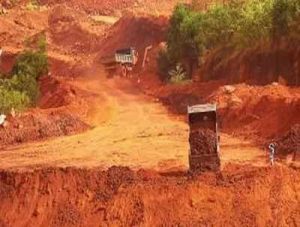
Two people were arrested under the Atomic Energy Act, 1962 for possessing uranium without license and selling it illegally.
- On testing, the sample was confirmed as natural uranium by Bhabha Atomic Research Centre (BARC).
Uranium:
- Uranium occurs naturally in low concentrations in soil, rock and water. It is a hard, dense, malleable, ductile, silver-white, radioactive metal.
- Uranium metal has a very high density.
- When finely divided, it can react with cold water. In air it is coated by uranium oxide, tarnishing rapidly.
- It can form solids solutions and intermetallic compounds with many of the metals.
- Applications:
- Energy Production: The main use of uranium in the civilian sector is to fuel commercial nuclear power plants for the generation of nuclear energy.
- This requires uranium to be enriched with the uranium-235 isotope and the chain reaction to be controlled so that the energy is released in a more manageable way.
- Making Atomic Bomb: The first atomic bomb used in warfare was an uranium bomb.
- This bomb contained enough of the uranium-235 isotope to start a runaway chain reaction which in a fraction of a second caused a large number of the uranium atoms to undergo fission, thereby releasing a fireball of energy.
- Used as Shield against Radiation: Depleted uranium is also used as shield against radiation in medical processes using radiation therapy and also while transporting radioactive materials.
- Though itself radioactive, uranium’s high density makes it effective in halting radiation.
- Used as Counterweights in Industry: Its high density also makes it useful as counterweights in aircraft and industrial machinery.
- Radiometric Dating: The isotope uranium 238 is used to estimate the age of the earliest igneous rocks and for other types of radiometric dating.
- Fertilizer: Phosphate fertilizers are made from material typically high in uranium, so they usually contain high amounts of it.
Health and Environmental Impacts:
- Impact on Health: Potentially depleted uranium has both chemical and radiological toxicity with the two important target organs being the kidneys and the lungs.
- Impact on Environment: Uranium mining facilities produce tailings that generally are disposed of in near surface impoundments close to the mine.
- These tailings pose serious environmental and health risks in the form of Radon emission, windblown dust dispersal, and leaching of contaminants including heavy metals and arsenic into the water.
Uranium Deposits In India:
- In India, Uranium deposits occur in the Dharwar rocks.
- It occurs along the Singhbhum Copper belt (Jharkhand); Udaipur, Alwar, and Jhunjhunu districts of Rajasthan, Durg district of Chhattisgarh, Bhandara district of Maharashtra, and Kullu district of Himachal Pradesh.
- Significant quantities of reserves have been recently discovered in parts of Andhra Pradesh and Telangana between Seshachalam forest and Sresailam (Southern edge of Andhra to Southern edge of Telangana).
Sinopharm COVID-19 Vaccine:
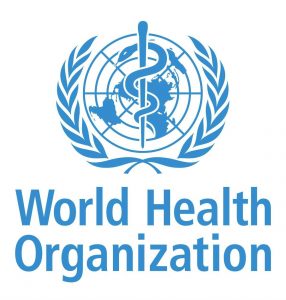
The World Health Organization approved the Sinopharm COVID-19 vaccine for emergency use — the first Chinese jab to receive the WHO’s green light.
- The UN health agency signed off on the two-dose vaccine, which is already being deployed in dozens of countries around the world.
- The WHO has already given emergency use listing to the vaccines being made by Pfizer-BioNTech, Moderna, J&J, and the AstraZeneca jab being produced at sites in India and in South Korea.
- The Sinopharm vaccine is an inactivated coronavirus vaccine, like Covaxin developed by Bharat Biotech India (BBIL) in collaboration with the National Institute of Virology (NIV).
- Inactivated vaccines take the disease-carrying virus (in this case SARS-CoV-2) and kill it using heat, chemicals or radiation. WHO notes that these vaccines take longer to make and might need two or three doses to be administered. The flu and polio vaccines use this approach as well.
- Out of the major vaccines being used in the world, Sinopharm, Covaxin and Sinovac (also developed by China) are the only ones that use inactivated virus. Others such as Pfizer-BioNTech and Moderna are mRNA vaccines, whereas Oxford-AstraZeneca, Sputnik and Johnson and Johnson’s single-dose vaccines use a viral vector.
Socially And Educationally Backward Classes (SEBC):
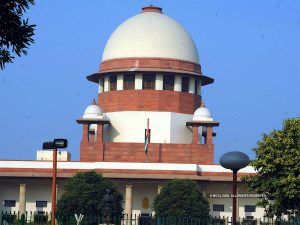
The supreme court said that the Centre alone is empowered to identify Socially and Educationally Backward Classes (SEBC) and include them in the Central List for claiming reservation benefits.
- The President (that is the Central government) alone, to the exclusion of all other authorities, is empowered to identify SEBCs and include them in a list to be published under Article 342A (1), which shall be deemed to include SEBCs in relation to each State and Union Territory for the purposes of the Constitution.
- States could only make suggestions to the President or the statutory commissions concerned for inclusion, exclusion or modification of castes and communities to be included in the List.
- The Central List is to be the “only list” for the SEBC.
- Once published, under Article 342A (1), the list can only be amended through a law enacted by Parliament, by virtue of Article 342A (2).
- In the task of identification of SEBCs, the President shall be guided by the Commission (National Commission for Backward Classes) set up under Article 338B; its advice shall also be sought by the State in regard to policies that might be framed by it.
- If the commission prepares a report concerning matters of identification, such a report has to be shared with the State government, which is bound to deal with it, in accordance with provisions of Article 338B.
- However, the final determination culminates in the exercise undertaken by the President (i.e., the Central Government, under Article 342A (1).
- However, the President’s prerogative as far as the identification and inclusion of SEBCs in the List would not affect the States’ power to make reservations in favor of particular communities or castes within the ambit of Articles 15 and 16.
S. Janakiraman Advisory Group:

The Reserve Bank said an advisory group had been constituted to assist the second Regulatory Review Authority (RRA) which was set up by the central bank earlier this month to streamline regulations and reduce the compliance burden of regulated entities.
- Headed by SBI Managing Director S. Janakiraman, the group will assist the RRA by identifying regulations, guidelines, and returns that can be rationalized.
- The group will assist the RRA by identifying areas, regulations, guidelines, returns which can be rationalized and submit reports periodically to RRA containing the recommendations/suggestions.
- In 1999, the RBI had set up a Regulations Review Authority (RRA) for reviewing the regulations, circulars, reporting systems, based on the feedback from the public, banks, and financial institutions.
- The RBI has set up the second Regulatory Review Authority (RRA 2.0), initially for a period of one year from May 01, 2021, with a view to streamline regulations and reduce the compliance burden of regulated entities.
- Reserve Bank of India Deputy Governor M Rajeshwar Rao was appointed as the Regulations Review Authority.
Frequent Earthquakes In Northern Assam’s Sonitpur area:
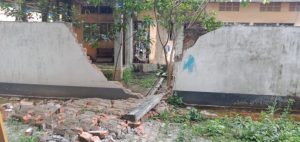
An unfamiliar lineament is among four factors behind frequent earthquakes in northern Assam’s Sonitpur area.
- A lineament is a linear feature in a landscape dictated by an underlying geological structure such as a fault.
- According to the Geological Survey of India (GSI), the Sonitpur district lies within a tectonically complex triangular area bounded by the east-west trending Atherkhet Fault, the northwest-southeast trending Kopili Fault, and a north-south trending lineament.
- The two faults and the lineament, along with the oblique convergence of the Indian plate, have caused frequent earthquakes.
- The National Centre of Seismology recorded 29 earthquakes of magnitude varying from 2.6 to 4.7 in Sonitpur after the 6.4 tremblors on April 28 that damaged several buildings, bridges, and a river embankment.
- The northeast is demarcated as Seismic Zone V, which indicates a zone with high vulnerability.
- The Indian plate is moving northeast toward the Eurasian plate in the Himalayan region, their oblique collision and release of stress and strain accumulated in the local tectonic or fault environments lead to earthquakes.
Mount Sinabung Erupted: Indonesia:
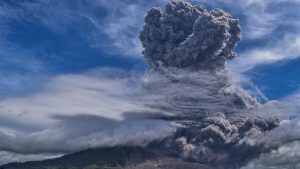
Indonesia’s Mount Sinabung, located in the North Sumatra province, erupted in May 2021 belching a massive column of volcanic ash and smoke 3,000 meters (3 km) into the sky.
- The volcano has been active since 2010 when it erupted after nearly 400 years of inactivity.
- Indonesia is home to many active volcanoes owing to its location in the “Ring of Fire” or the Circum-Pacific Belt — an area along the Pacific Ocean characterized by active volcanoes and frequent earthquakes.
- The Ring of Fire is home to about 75 percent of the world’s volcanoes and about 90 percent of earthquakes also occur here.
- Basically, there are three types of volcanoes — active, dormant, or extinct.
- An eruption takes place when magma (a thick flowing substance), which is formed when the earth’s mantle melts, rises to the surface.
- As magma is lighter than rock, it is able to rise through vents and fissures on the surface of the earth.
- Following the eruption, the magma is called lava.
- When the magma is runny and thin, gases can easily escape it. In such cases, the magma will flow out towards the surface.
- However, if the magma is thick and dense and gases cannot escape it, it builds up pressure inside resulting in a violent explosion.




